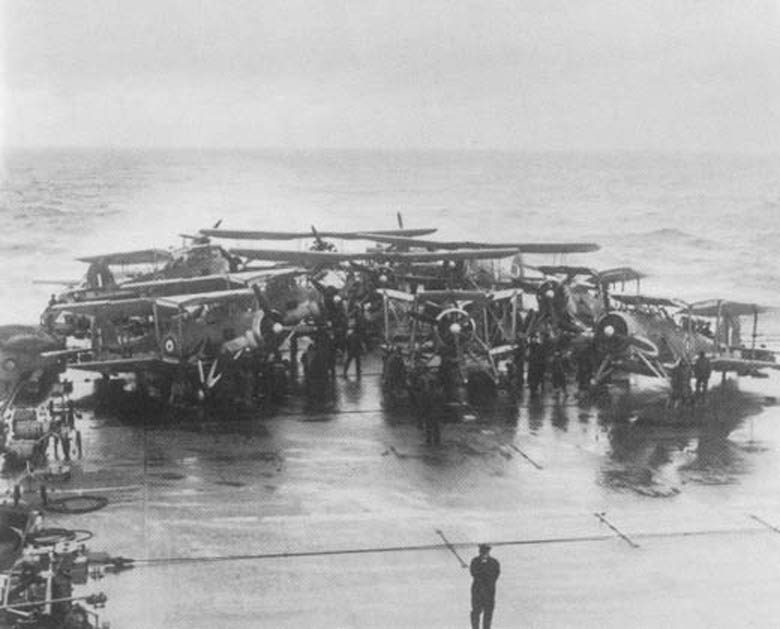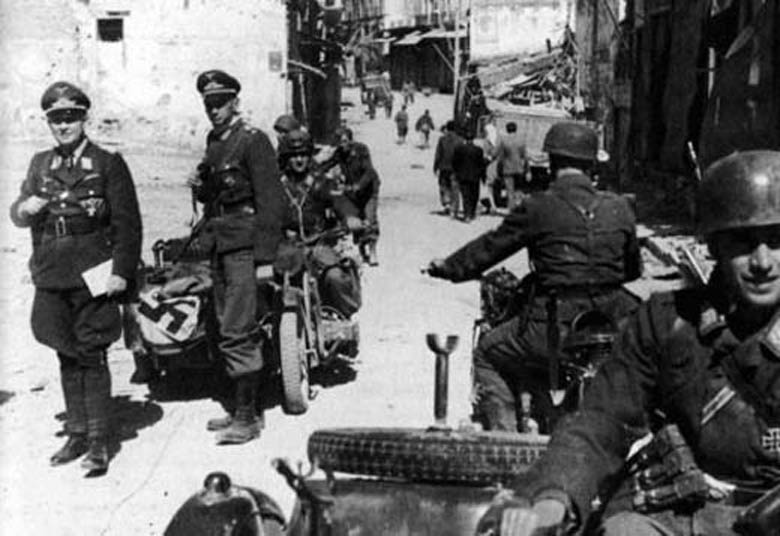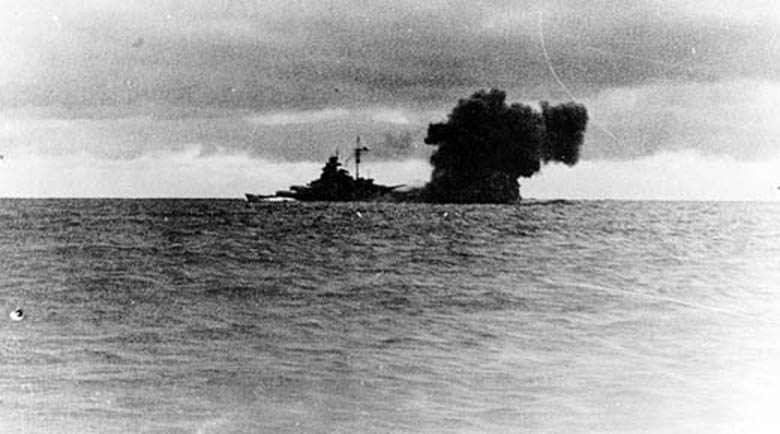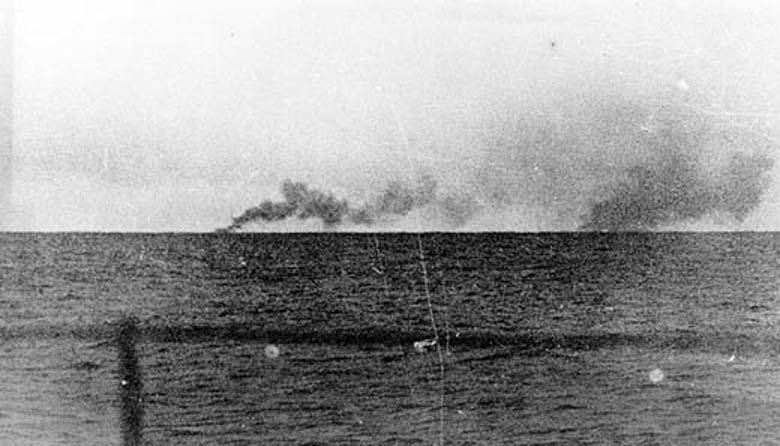Battle of the Atlantic
At 2:47am the Suffolk finds the 2 German ships on her radar. Continuing her present course the Bismarck will come in contact with Hood about 5:30am. At 5:35am the Hood and the battleship Prince of Wales sight the 2 German ships to the northwest. At 5:52am the Hood and the Prince of Wales along with their escort of destoyers come up and engage the German ships. At 6:00am a shell from Bismarck passes through the light armor of the Hood and explodes in the stern magazine. The ship blows up and sinks almost immediately. The location is in the Denmark Strait, east of Greenland. Only 3(4?) men from the Hood's complement of 1416 are saved. In a short time the Prince of Wales is also hit a number of times and Capt Leach decides to break off the action and withdraw. The Bismarck does not try to pursue and the British battleship is able to meet up with the Norfolk and Suffolk without further trouble. The 2 British cruisers continue to shadow the German battleship which is making for the Bay of Biscay.
|
|
Various theories try to explain how the Hood was destroyed so quickly. Certainly the ship's armor was inadequate by 1941 standards and the Hood was long overdue for her planned modernization. It is possible that a shell from the Bismarck penetrated the magazine but a more plausible explanation is that a shell set fire to some antiaircraft rocket ammunition and that this fire spread to the magazine.
The Prince of Wales is very new and has sailed from Scapa with some dockyard men still aboard working on the guns. In the action one of the guns jams and cannot be used. This contributes to the decision to break off the action. There has been no time for the crew to train properly and this state of affairs will prevail for the rest of the ship's life. Although the ships of the King George V Class are generally sound, they all require a generous working-up period before they are fully efficient.
However, the defects of the ships are not the only reason for the Bismarck's success. Adm Holland led his ships into the battle in such a way that not all their heavy guns could bear, nor does he seem to have made full allowance for the possible effects of plunging long-range fire on the comparatively thin deck armor of the Hood.
After the action the British cruisers continue to shadow the German ships. During the afternoon the British Admiralty calls up the aircraft carrier Ark Royal, the battleships Ramillies and Rodney, the battlecruiser Renown, the cruiser Sheffield and 6 destroyers, all belonging to 'Force H', stationed at Gibraltar. Almost half the British fleet is now hunting the most powerful battleship in the world.
The Bismarck has been hit 3 times, which has caused the loss of some fuel and the contamination of more. Lütjens therefore decides to put in to Brest. During the night 8 Swordfish from the Home Fleet carrier Victorious attack and hit Bismarck with 1 torpedo. The damage is negligible. Later in the night Prinz Eugen slips away to operate independently, and later still contact is lost between the shadowing British cruisers and the Bismarck.
Swordfish on the Flight Deck of the Victorious |
 |
- U-38 sinks the British steamer Vulcain (4362t) 165 miles northwest of Freetown with the loss of 7 of her crew. 35 survivors make it to Boffa, French West Africa, in lifeboats.
- U-103 sinks the Greek steamer Marionga (4236t) 30 miles west-southwest of Buchanan, Liberia. 26 of her crew are lost, 3 are picked up by the British steamer City of Rangoon and 2 land at Monrovia 10 June.
- The Greek steamer Matronna (2846t) is sunk by German bombing all Milford Haven. The entire crew is rescued.
Crete
The Allied forces in the Canea area are now in positions around Galatas. The German buildup at Maleme continues. Adm Cunningham tells London that he is no longer in a position to bar the way to the German convoys except at the risk of extremely heavy losses. London's answer is categorical: at all costs the Royal Navy and the RAF must prevent the Germans form receiving reinforcements by sea.
Bitter fighting continues throughout the island, the paratroops against the British and Anzacs, the mountain troops facing the Greeks who have taken up positions in the mountains. By the evening the situation at Retimo and Haraklion is still critical; the German troops in the Heraklion sector have been reinforced by another parachute battalion during the day.
Gen Kurt Student Arrives in Crete |
 |
The Greek government leaves for Cairo.
Gen Freyberg asks Wavell for massive intervention by the RAF in support of the ground troops. In the evening the British land 2 commando battalions in Suda under the command of Col Laycock.
[German Raiders
The German raider Atlantis sinks the British steamer Trafalgar (4530t) in the South Atlantic with the loss of 12 of her crew.
[Italian East Africa
In southern Abyssinia Soddu falls to the Allied forces. In this area Gen Gazzera leads seven weak Italian divs. The attacking Allied force is made up of the 11th and 12th African Divs.
[Mediterranean
The British Upholder attacks an Italian convoy east of Sicily, sinking the troopship Conte Rosso (17,900 t); 800 are drowned.
[
